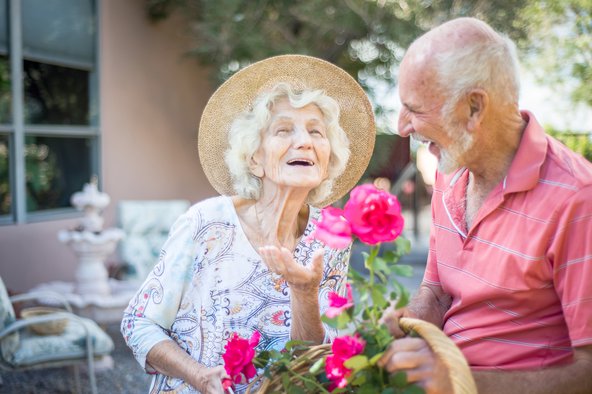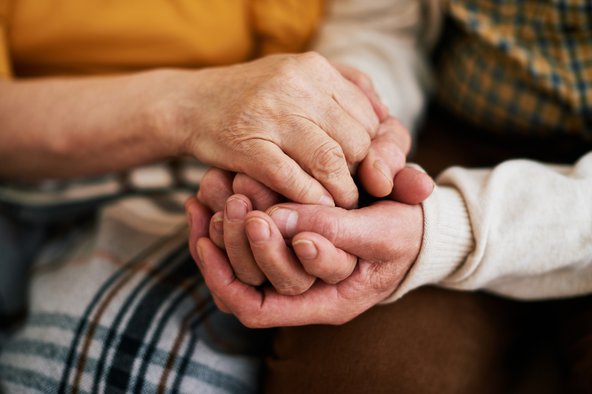When growing old together means living apart
by Dr Manik Gopinath
14 Feb 2018
Valentine’s Day, is a durable cultural feature of modern societies. The key theme of the day, helped on by marketing, is romantic relationships and coupledom. But what does coupledom mean today? We know that as a society, being in a ‘couple relationship’ matters and remains valued, although not necessarily bound by obligations of marriage or formal civil partnerships.
Challenging the idea that couples only live together
This is reflected in the recent emergence of ‘living apart together’ (LAT) when (unmarried) people in couple relationships are not always able to live with each other. A key feature of LAT relationship types is their non-residential nature. Just as unmarried cohabitation challenged the norms of marriage, LAT relationships challenge the idea that coupledom is premised on living together. Living apart together has also been largely associated with working lives, and this is perhaps, reflected in a 2002-2003 UK survey focusing on people aged 16-59 that found 9% of British adults are in LAT relationships.
“9% of British adults are in ‘living apart together’ relationships.”
Older couples living apart together
But what happens later in life? The over 60s are not a homogeneous group when it comes to relationships. More people aged 65 and over are living as couples within diverse forms of relationships: married, civil and cohabiting partnerships and ‘living apart together’ (often following widowhood or divorce). There exists an assumption that unless separated by divorce or death, older married and cohabiting couples continue to live together, but there exists a minority of such couples that do live apart.

The invisible minority of coupled care home residents
The stereotype of the care home resident is that of a single older person and census data confirms that the largest group by marital status in the UK care home population is the widowed.
Partnership status data of care home residents at the level of care homes is not available in the public domain so married care home residents, their partners and the couple relationship remains invisible in everyday life, research, data and policy.
This is not to say that transitions of older people to care settings and the implications for family carers have not been researched – both have received separate and parallel attention – but not necessarily through a coupled relationship perspective and incorporating views of both partners.
Extra need for care resulting in couples living separately
Our research project, ’Coupledom in later life: living together and apart’ looks at these older couple relationships. While sharing the non-residential feature of younger LAT type relationships, in later life the pathways to living apart can be different for such couples. Married or cohabiting older couples may come to live apart when one partner’s need for care cannot be provided for at home and they have to move into a residential care home. We know little about how these couples manage their relationships.

Exploring how these couples manage living apart in later life
The care home sector in United Kingdom is not designed or financed to support couple living unless both partners have health and care related needs. Self-funders might opt to move in with their partner and be able to do so but we do not know how this is perceived by late life couples, where such an option exists.
Within the above context, we know little about the lives of older couples in this situation, their experiences of living apart, the implications of living apart, impact on other family members, and how they keep their relationship going with one partner living in a care home and the other continuing to live in the community (domestic and sheltered settings). This is what we aim to explore.
Implications for lifelong partners
Existing research tells us that these couples are likely to have lived and co-resided in ‘couple relationships’ for many years before living apart together. What we do not know is whether expectations of conducting their relationship at a distance are an anticipated or expected part of their understanding of being a couple.
At a time when we are witnessing fluidity in contemporary conceptions of couplehood, what might it mean for older couples living apart due to moves into care homes? Especially when their ideas of ‘being a couple’ are likely to have been formed during times of particular ‘prevailing’ norms of marriage and cohabitation.
We shall keep you posted as findings begin to emerge.
Dr. Manik Gopinath (Principal Investigator) is a Lecturer in Ageing at The Open University. She together with Dr. Caroline Holland (Co-Investigator), Senior Research Fellow, The Open University and Prof. Sheila Peace (Lead, Advisory group), Emeritus Professor in Social Gerontology, The Open University have been funded by a British Academy/Leverhulme Small Research Grant to carry out a study on the impact of living apart amongst older couples who are separated by moves into a care home.
Image credits:
istock.com/ivanastar
istock.com/mediaphotos


